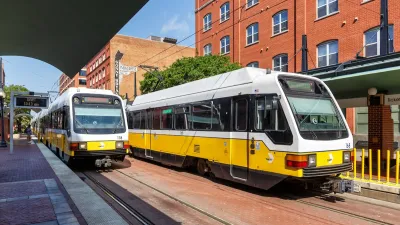Two adjacent properties in downtown Durham totaling 18 acres were recently purchased by developers planning for intensive mixed use projects near the former tobacco warehouse district and future light rail station.
Two former car dealerships have been acquired by Charlotte-based developers, CitiSculpt and Northwood Ravin, who are planning to convert the expansive site—which is now mostly surface parking—into a massive mixed use redevelopment project. The site, near the American Tobacco Campus and Durham Bulls Athletic Park, is unique because unlike many recent developments in downtown Durham, it is not an adaptive reuse project.
"Adaptive reuse, the preservation of our historic structures, that put Durham on the map," said Geoff Durham, president of Downtown Durham Inc. "But these are car dealerships and a large majority of that is surface lots. By all accounts this next wave is going to be kind of skyline altering."
Plans currently include two office towers, retail space, a hotel, and parking deck. An initial development phase of CitiSculpt's $400M project calls for a 300-unit apartment community by Woodfield Investments.

The location is visible from Durham Freeway, and adjacent to the planned Dillard Street light rail station. Downtown Durham sits in the middle of a 54 mile planned light system, which will connect Raleigh, Durham, and Chapel Hill. The system includes 28 stations, and would serve several major universities, hospitals, employment centers, and the Raleigh-Durham International Airport. Triangle Transit's tentative completion date for light rail is 2025.
FULL STORY: Two New Projects Could Reshape Durham Skyline

Alabama: Trump Terminates Settlements for Black Communities Harmed By Raw Sewage
Trump deemed the landmark civil rights agreement “illegal DEI and environmental justice policy.”

Planetizen Federal Action Tracker
A weekly monitor of how Trump’s orders and actions are impacting planners and planning in America.

The 120 Year Old Tiny Home Villages That Sheltered San Francisco’s Earthquake Refugees
More than a century ago, San Francisco mobilized to house thousands of residents displaced by the 1906 earthquake. Could their strategy offer a model for the present?

Indy Neighborhood Group Builds Temporary Multi-Use Path
Community members, aided in part by funding from the city, repurposed a vehicle lane to create a protected bike and pedestrian path for the summer season.

Congestion Pricing Drops Holland Tunnel Delays by 65 Percent
New York City’s contentious tolling program has yielded improved traffic and roughly $100 million in revenue for the MTA.

In Both Crashes and Crime, Public Transportation is Far Safer than Driving
Contrary to popular assumptions, public transportation has far lower crash and crime rates than automobile travel. For safer communities, improve and encourage transit travel.
Urban Design for Planners 1: Software Tools
This six-course series explores essential urban design concepts using open source software and equips planners with the tools they need to participate fully in the urban design process.
Planning for Universal Design
Learn the tools for implementing Universal Design in planning regulations.
Clanton & Associates, Inc.
Jessamine County Fiscal Court
Institute for Housing and Urban Development Studies (IHS)
City of Grandview
Harvard GSD Executive Education
Toledo-Lucas County Plan Commissions
Salt Lake City
NYU Wagner Graduate School of Public Service




























